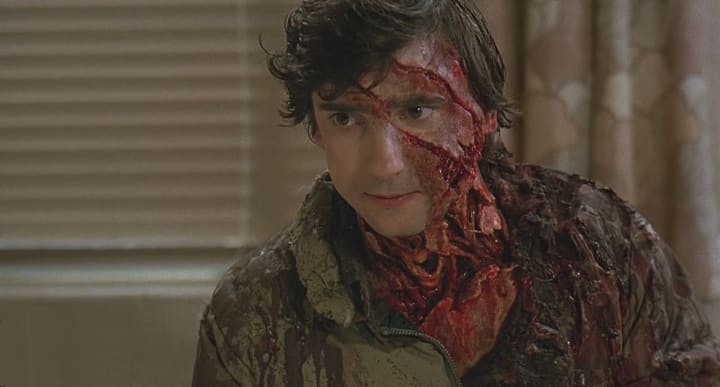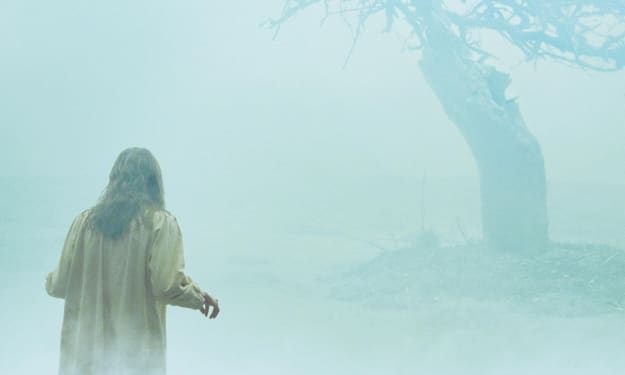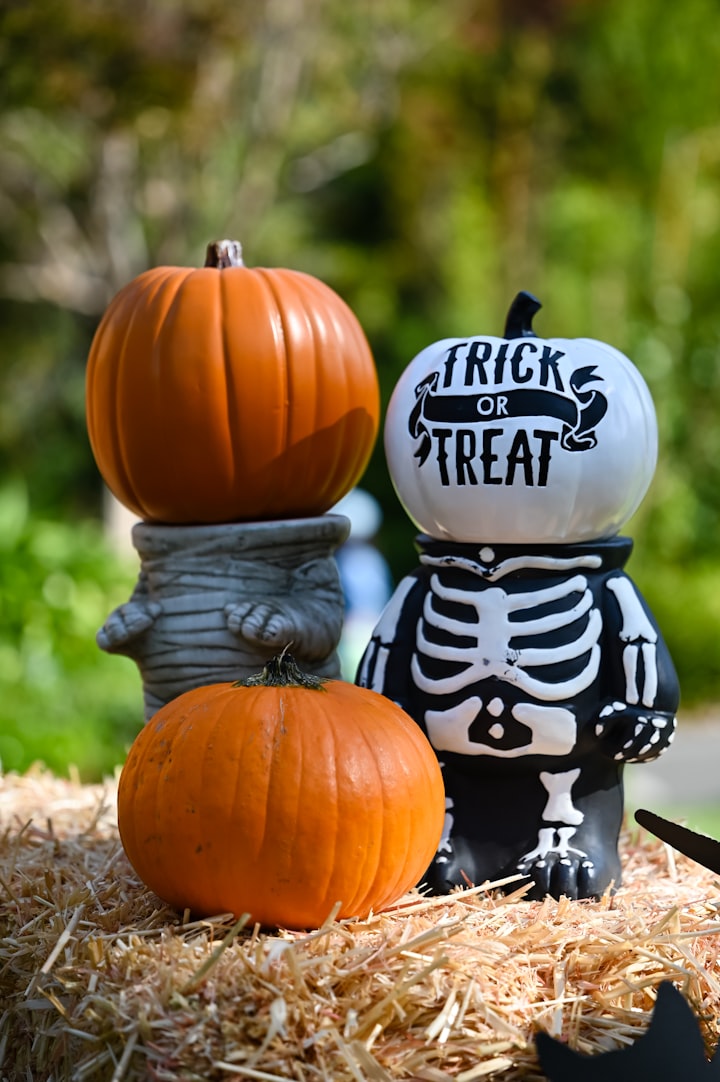A Filmmaker's Guide to Horror Techniques Used in 'American Werewolf in London'
Study, Experience, and Analysis

(Note: this article will contain extensive analysis and attention to the film An American Werewolf in London. In order to get the best insight, it is recommended that you watch the whole film at least once).
An American Werewolf in London is one of the most iconic films in horror cinema history. It has inspired everything from the "werewolf" film sub-genre to the dark and deep atmosphere and even to the most famous music video in all of history. The horror themes in this film are vast and expansive and so, we will take a look at three of the main ones (since they are used expansively instead of many). Let's take a look at what we'll be going through today:
- Space and Depth
- Abnormality
- Darkness
The thing about An American Werewolf in London is that it doesn't use one theme in a singular way. Instead, it takes a theme and tries to flesh it out and see what it can do. If you know what's happening in theme 2, you'll understand where I'm coming from.
1. Space and Depth

A Still from An American Werewolf in London
The space and depth of a film is very important for creating the space in which the character can move. In a horror film, this is even more important for creating a space which is uncomfortable to move in or uncomfortable to look at. In An American Werewolf in London space and depth are used in increasingly different ways to portray different types of an uncomfortable atmosphere, making sure there is a certain amount of tension throughout the film, even when no event is taking place.
Take a look at the frame above. We can see an incredible amount of depth and the way in which the camera is looking upon it makes it almost dizzying to see. The fact that there is so much depth and that the space is so empty means that we can get a look right to the end, creating the sense of even more depth.
Here's a tip: for creating more depth, try to have less characters fill the space, it will look deeper and more uncomfortable this way.
The way the camera is placed not only makes everything look a bit dizzying, but it also makes the walls look a lot bigger than they actually are. This is done by placing the camera nearer to the floor but having a minute tilt upwards in order to get the whole tunnel in shot.
Let's have a look at another way in which this film creates space and depth:
Frame 2

A Still from An American Werewolf in London
The space and depth created here is slightly different and is done for the reason of making the land look as isolated as physically possible. We have the hills in the background giving the frame some height and then we can see a bit of the road behind the characters where depth is created. Finally, we can see the sky and how it fills up half of the frame, giving us a lot of space in the shot.
The way in which these two characters are placed at the front of the frame give this frame not only that essential space, but also that feeling of uncomfortable isolation. These characters are by themselves and this is exemplified by the fact that there is nothing else crowding that vast space behind them.
Let's have a look at another one that is similar to this so you can see the full extent of creating that feeling of isolation:
Frame 3

A Still from An American Werewolf in London
Now, instead of seeing what's behind the characters, we get to see the land in front of them. The most uncomfortable thing about this scene is how similar everywhere looks. We have the hills creating height and the ones in the background creating depth. We have the rows of trees creating isolated spaces and then, the characters that are within one of those many spaces.
Here's a tip: notice how around the characters there is no sense of crowding whatsoever by the trees. For creating uncomfortable space, you may want to try this technique. It can be highly effective for building tension throughout your story without much dialogue at all.
Therefore, space and depth can serve as an isolation feature or as a feature of dizzying tension. Both of which can build the atmosphere up to the point of climax without having very much else going on at the time.
2. Abnormality

A Still from An American Werewolf in London
The abnormality that occurs in An American Werewolf in London does not occur in one particular way. The main situation in which it takes place is the man turning into a werewolf. This is made quite clear throughout the film even before we know that one character is, in fact, a werewolf. Colour connotations that confirm a character's abnormality of not fitting in with a particular scene tell us that this character is the one that will have the werewolf traits. This is confirmed by the red jacket which he wears in order to stand out from the scene full of greenery and his friend who is wearing a green jacket.
Abnormality also occurs through physical transformation, sparking off a series of films which tried to imitate the movement. This particular one deals with the horror of the abnormality as the human changes into something that does not look remotely human and, through the concept of sharpness and rigidity, is quite violent.
Let's have a look at how it occurs in other frames and scenes (this is what I was referencing in the beginning of the article):
Frame 2

A Still from An American Werewolf in London
Here's another take on abnormality. The abnormality here shows us what actually happened to the friend that went with the werewolf character into the isolated area. The werewolf character killed him. As we see in frame, he's still wearing the same clothes he was wearing when he went on the excursion with his friend. This is confirmed by the jacket. For the sake of abnormality, the expression on his face isn't all too bothered, but the way in which he appears to the audience is completely abnormal as he is covered in blood, scars and fatal wounds.
Here's a tip: when dealing with abnormality, especially when there's a dead character involved, try to make them look impressively normal but have something uncomfortable to look at in their character. Take a look at the frame of this character for more information. We have a character that doesn't look as if they're dead as they don't have the regular bright white make-up and matted hair look; instead they look very much alive but by the way the wounds show, we can tell that in fact, they are not alive at all.
3. Darkness

A Still from An American Werewolf in London
Darkness is obviously a theme in the vast majority of horror films, but in An American Werewolf in London it is used to a degree that it would make Bela Lugosi feel a bit lighter on the outside in his films. I'm talking about the three types of darkness that this films gives us and, with the look of this frame it seems like we're going to start of with the physical side of the theme.
Take a look at how this frame creates depth with darkness; we don't get to see where the frame ends when it goes back, we don't get to see any of the hills or rocky roads we see in the lighter scenes. Instead of this, we see an ominous fog and mist that hangs around and, only because it is white and the night is a musky blue and grey means that this fog is seen more and makes the darkness look even darker and even deeper as the fog floats around and masks the surrounding area from view.
Look how the fog seems to be going off slightly to one side in order to make the scene seem darker in colour, especially given the fact that there is bright green grass in the scene. If you care to look at the space that isn't covered with fog, we can see it is only the sky part. This means that the fog is there in order to blend the colour of the sky with the colour of the grass whilst also giving its own ominous musky atmosphere.
Let's have a look at another type of darkness. This time, we'll look at darkness as a characteristic and physical trait:
Frame 2

A Still from An American Werewolf in London
As the film progresses, there are many dead bodies seen walking around after they are murdered by the werewolf, there's also a ton of gore as this is probably a good example of a slasher film. But, the characteristic of darkness as a physical trait comes in handy when depicting time.
The physical trait of darkness shows, in this frame, how the body rots over time and becomes darker. The lighter, more grass-like green of the jacket that is present when the character is killed is not so later on in the film in this frame. The colour is fading to black, as is his skin and his wounds are far less prominent, becoming big black holes or looking a bit like moss on a tree.
The depiction of time is very important, but through a character trait from the physical point of view it can be even more indirect but still just as effective as showing day or night.
The final type of darkness we're going to have a look at is through suggestion and association. Here, we look more at ideas rather than the physical darkness:
Frame 3

A Still from An American Werewolf in London
In association, the main way An American Werewolf in London portrays darkness is through the haunting character images that appear throughout the film. Not only are there people with wounds that appear as already dead, there's images and scenes of chases, people dying by the hand of the Werewolf and images of David becoming the Werewolf. All of these are dark by association. They may not look dark physically, but the more you think and philosophise about them, the darker they become. The reason why this film is packed full of them is to keep the constant pendulum of tension swaying in the film. Especially seen in the sections of David's transformation.
Conclusions:
If you wanted to look into more depth about An American Werewolf in London then you could explore one or more of the following ideas and themes:
- Colour
- Light Sources
- Death and Violence
- Atmosphere
- The Potential to Harm
Good luck on your next project!
About the Creator
Annie Kapur
200K+ Reads on Vocal.
English Lecturer
🎓Literature & Writing (B.A)
🎓Film & Writing (M.A)
🎓Secondary English Education (PgDipEd) (QTS)
📍Birmingham, UK






Comments
There are no comments for this story
Be the first to respond and start the conversation.